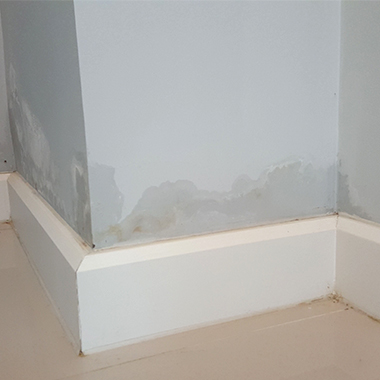As a damp proofing company based in Oxford, we understand the challenges that come with dealing with damp issues in homes and buildings. Damp can cause serious damage to a property, and if left untreated, it can lead to structural problems, health issues, and mold growth. In this blog post, we will explore what damp is, the types of damp, and how to prevent and treat it.
What is damp?
Damp is the presence of excess moisture in a building that can cause problems such as peeling wallpaper, black mold, and damp patches. Damp can occur for several reasons, including poor ventilation, leaking pipes, or a damaged roof. Damp is a common problem in older properties, but it can also affect new buildings if the proper precautions are not taken during construction.
Types of damp
There are three main types of damp: rising damp, penetrating damp, and condensation.
Rising damp occurs when water from the ground rises up through the walls of a building, typically due to the lack of an effective damp proof course. This type of damp is most commonly seen in older properties and can lead to damage to skirting boards, crumbling plaster, and a damp musty smell.
Penetrating damp occurs when water penetrates through walls or roofs, often due to damaged or blocked guttering or downpipes. This type of damp can cause damage to plaster and paintwork, and it can also lead to mold growth.
Condensation occurs when warm, moist air comes into contact with cold surfaces, such as windows or walls. This type of damp is often seen in bathrooms and kitchens, but it can occur in any room with poor ventilation. Condensation can lead to mold growth and damage to paintwork and wallpaper.
Preventing and treating damp
Preventing damp is essential to avoid costly repairs and protect the health of the occupants of a building. Here are some steps to take to prevent and treat damp:
- Ensure that there is adequate ventilation in your property. Open windows regularly, and use extractor fans in bathrooms and kitchens.
- Check your gutters and downpipes regularly, and repair any damage immediately.
- Install a damp proof course if your property does not have one.
- Insulate your property to prevent condensation.
- Use a dehumidifier to reduce excess moisture in the air.
If you have identified damp in your property, it is essential to treat it as soon as possible to avoid further damage. At our damp proofing company, we offer a range of treatments, including chemical damp proofing, basement tanking, and cavity wall insulation. Our team of experienced professionals can assess your property and recommend the most effective treatment for your specific needs.
Conclusion
Damp can be a significant problem for homeowners and building owners. It can lead to damage to the property and health problems for occupants. By taking steps to prevent and treat damp, you can protect your property and the people who live or work in it. If you are experiencing damp problems in your property, contact us at our damp proofing company in Oxford for expert advice and treatment options.

